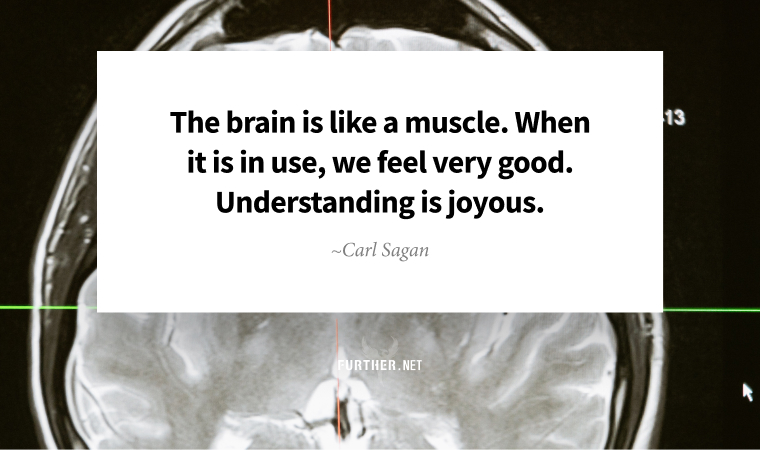
What’s your definition of nirvana? (Well, besides the obvious.)
Dr. Jill Bolte Taylor first experienced nirvana in 1996 when she was 37, working as a neuroscientist at Harvard University. But it wasn’t anything she conjured in a lab — she had a massive stroke.
While most of us would be terrified, Taylor found the experience fascinating. For four hours at home alone, she became her own case study as a golf-ball-sized blood clot took down the left lobe of her brain, which is the seat of the ego, judgment, context, and analysis. It would take surgery and eight years of recovery to regain all she’d lost.
But in those first few hours, as half her brain went “offline” to a point where she could no longer walk, talk, read, write, or recall her life, Taylor gained something miraculous: a right-brain-fueled encounter with unbounded bliss. As she wrote in her memoir and recounted in her viral TED Talk, both entitled My Stroke of Insight:
I felt like a genie liberated from its bottle. The energy of my spirit seemed to flow like a great whale gliding through a sea of silent euphoria.
In the decades since her stroke, Taylor has continued her research in neuroanatomy to reveal that the old way of thinking about “right brain vs. left brain” is out of touch. We’re not only good (or bad) at logic-based STEM topics (left brain) or creative arts (right brain) — we’re both. Neuroscience shows that both hemispheres have an even distribution of emotional limbic tissue, meaning that each side has an emotional brain and a thinking brain.
This discovery has led Taylor to develop a system she calls “whole brain living,” where she characterizes the modules of cells on each side of the brain. This way, we can identify what part of our brain is calling the shots and what we can do to make better choices.
When we understand which cells manifest which of our abilities, the more power we have to choose who and how we want to be in any moment.
In her newest book, Whole Brain Living, Taylor describes each of the four modules as a “Character.” Here’s what each represents:
Character 1 (left, thinking cells): Productive, rational, organized, and judgmental; the “can do” you
Character 2 (left, emotional cells): Fear-based, powered by the past, and externally focused; personal growth happens here
Character 3 (right, thinking cells): Seeks connection with others, loves exploring and fun; the emotional experiential self
Character 4 (right, emotional cells): Filled with love, gratitude, and inner peace; exists solely in the present moment. This part of the brain led Taylor to experience “nirvana” when the stroke wiped out her left hemisphere. It’s also the place we activate when we meditate or pray.
The technique Taylor teaches to get the Four Characters to collaboratively halt the cycle of emotional reactivity is a “BRAIN Huddle.” Anytime you feel upset or out of control, pause and use this tool.
Breathe: Use your breath to bring your brain into the present moment and Characters 3 and 4 into the conversation.
Recognize: Acknowledge which Character was dominating — that’s who “called” the Huddle.
Appreciate: Give all your Characters some love, not just the one who called the Huddle. This calms you down, bringing all parts of your brain “online” and in sync.
Inquire: Ask each Character their opinion to help guide your decision-making.
Navigate: Here’s where you choose — which Character do you want to come up next? How can you move out of reactivity and into the next right action for you?
Taylor told journalist Dan Harris that she has spontaneous BRAIN Huddles 30-40 times a day. If that sounds challenging, remember it’s a momentary pause to make mindful, intentional decisions. If you can take a minute to distract yourself by doom scrolling or playing Wordle, you can choose to do a BRAIN Huddle instead.
It doesn’t take a scientific genius or surviving a near-death experience to understand that the key to living consciously is owning your power to choose, in each moment, who you want to be. All it takes is a little brain-powered character-building to live a brilliant life.
Further exploration:
Books by Jill Bolte Taylor, PhD:
Whole Brain Living: The Anatomy of Choice and the Four Characters That Drive Our Life
My Stroke of Insight: A Brain Scientist’s Personal Journey
Interviews:
Buddha at the Gas Pump podcast
Ten Percent Happier Podcast with Dan Harris
TED Talk: My stroke of insight
Keep going-
P.S. New to Further? Join us here.
A Bite of the Reality Sandwich
They don’t call us the Sandwich Generation for nothing — sometimes, it feels like a whole lot of bologna is being tossed our way when we try to talk to our folks about their finances. And then we find ourselves in a pickle when we discover our parents have money woes at the same we’re busy paying for our kids’ college and thinking about our own financial future. A little proactive planning with your parents can help save everyone from scraping the jelly jar to get by — and who doesn’t want to be a hero?
What Gen X Needs to Know About Their Aging Parents’ Finances (Kipling)
Not So Dino-Mite
Sorry, Paleo Diet fans, the verdict is in: eating like our ancestors doesn’t help you lose weight or beat chronic diseases any more effectively than conventional recommended diets. Several recent studies have failed to support the multi-billion-dollar Paleo diet complex’s claim of better health by eating only what you can hunt or gather (meat, fish, nuts, and seeds) and avoiding dairy, cereal, and sugar. If you’re all about Paleo, it may be time to come out of your cave and sample the science for yourself.
It’s time to leave the Paleo Diet in the past: Recent studies have failed to support its claims (The Conversation)
Walking Wins (Again)
There are countless ways that walking helps you live a longer, healthier life, from the basic benefits of exercise to improved creativity and decision-making. Now, new research shows walking can enhance connections within and between three critical brain networks — one of which is linked to Alzheimer’s disease. One more great reason to get your daily stroll on.
Step Up for Brain Health: Walking Boosts Brain Networks, Combats Alzheimer’s (Neuroscience News)
Remember to Take Your Vitamins
There’s no question that vitamins are good for you, the question is are vitamins in supplement form effective. Answer: it might be time to rethink taking a supplement. The authors of a randomized controlled study found a “significant” amount of improved memory in the group who received a daily multivitamin vs. those who had a placebo. Once again, your mom was right — so don’t forget to take your vitamins!
Can multivitamins improve memory? A new study shows ‘intriguing’ results (NPR)
An Open-Minded Approach to Finding Closure

By Trudi Roth
Recently I chatted with a friend who had coffee with his ex. A year earlier, she blindsided him when she broke off their long-term relationship. Today he says he’s found “closure.”
As I listened, I realized it was a classic case of the lips saying one thing but the eyes telling another story. The pain was evident in his watery gaze as he assured me he was “all good.”
The desire to neatly wrap up life’s messy moments is universal — and complex. Looking for retribution from someone who has hurt, manipulated, or rejected you usually leaves you with more questions than answers.
But that doesn’t mean you can’t have closure. You just have to be open to creating it for yourself.
The Limitations of Letting Go
Coming to terms with emotional pain isn’t a simple decision to “let it go.” You’re not solely dealing with pain or trauma but also with your brain’s wiring.
The phrase “closure” was initially coined in 1996 by psychologist Arie Kruglanski. In his research, he explained that humans need definitive knowledge on any given topic where there is confusion. It stems from our very innate need to understand.
That urge can be exacerbated when the person(s) who wronged you isn’t willing, able, or available to respond. The good news is there are scientifically-backed ways to help you cease searching and find peace.
Cracking the Closure Code
First, you must recognize your thoughts about what happened and what could alleviate your pain are a self-generated narrative.
Spoiler alert: you are not the story in your head.
So, the trick is finding ways to rewrite the story. Personal growth coach May Pang offers the following techniques:
- Take back your time: Start by simply reminding yourself that person/situation has already taken up too much time in your life and space in your head.
- Meditate on loving-kindness: A loving-kindness meditation (i.e., Buddhism’s “Tonglen”) invokes positivity and encourages you to send that healing energy to others. Neuroscience research shows this meditation activates emotional processing.
- Write a letter: It can be to yourself, the other person, or both. Say everything you want; find gratitude where you can. Research shows letter writing helps you deal with unfinished business and create a story you can understand.
- Create an ending: Every culture has symbolic ending ceremonies and rituals, so make up your own (i.e., burn the letter you wrote, practice ho‘oponopono). Psychologists say this process is fundamental in creating closure as it helps you regain a sense of control.
Just because something’s ended doesn’t mean it’s case closed — it’s up to you to decide to shut things down. And once you do, you open the door to what ultimately heals you: moving on.
You Can’t Always Get Closure from People You Want It From (Medium: Better Humans)
further: flashback

The Flaming Lips – Fight Test
Yoshimi Battles The Pink Robots, 2002
Viewers said the tears started when Father & Son by Cat Stevens began playing at the end of the Ted Lasso finale. But for me it was hearing the beginning of Fight Test over the closing shot of Ted’s face (The test begins … now). Both songs are thematically perfect for the ending, but here’s the twist — Cat Stevens gets 75% of the royalties from Fight Test because it was deemed to have musically plagiarized Father & Son. That’s some top notch pop culture trolling by the Ted Lasso team. (YouTube)
further: sharing

Further subscribers who share the newsletter with friends can gain three months of access to our exclusive membership community Well + Wealthy with only five referrals. Get your own free weekly dose of health, wealth, travel, and happiness advice here, and find out all the details on our referral program.
Thank you for sharing Further!
